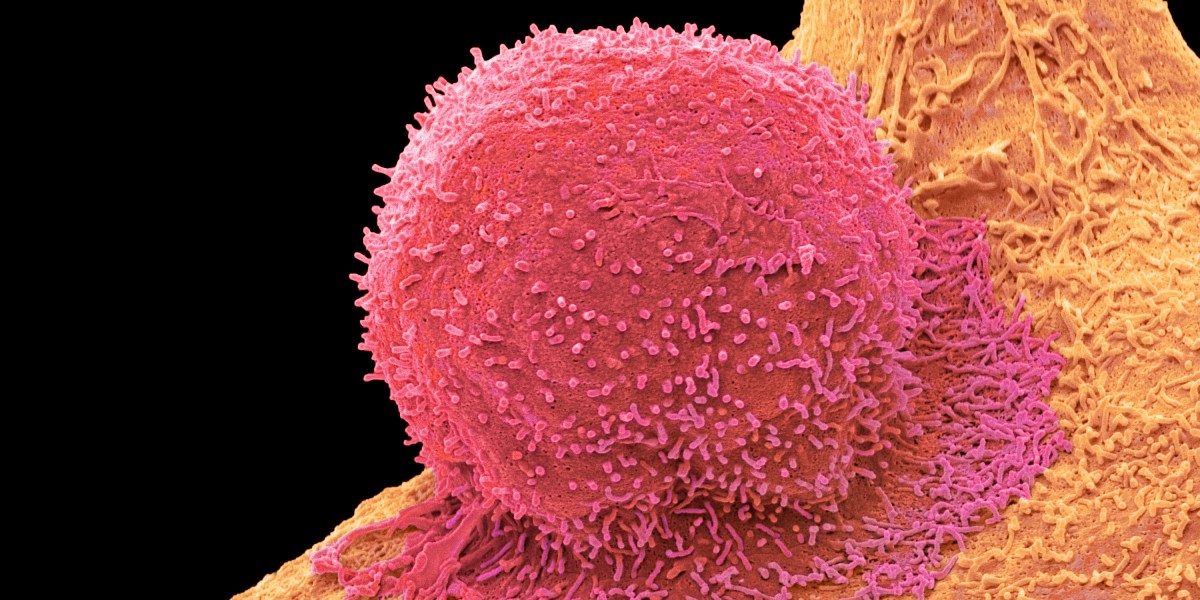
For example, researchers can create cells that require the presence of two antigens to activate (an “and” gate), or cells that activate in the presence of either receptor (an “or” gate). “You can create multiple inputs to your cell, just like the computer would do,” Young says. The T cell can then use that logic to decide whether it’s encountering a tumor cell or a normal cell. It’s more akin to the way T cells work naturally: they have multiple inputs and negative and positive feedback loops.
Arsenal Bio is one of the companies pursuing this “logic gate” approach. In January, Arsenal launched a clinical trial to test a CAR T therapy for ovarian cancer.
But sometimes there isn’t a unique protein or set of proteins available for the treatment to zero in on. In that case, if tumor-specific targets don’t exist, it might be possible to add them. In October, a team of researchers from Columbia University reported in Science that they had developed a CAR T therapy that relies on engineered bacteria to tag tumors. The researchers tweaked a strain of E. coli to carry green fluorescent protein and injected the bacteria into mice. The bacteria accumulated in the animals’ tumors. Then they injected the mice with T cells targeting that green protein. “We’re painting the tumors green, and the T cells can ‘see’ green,” says Rosa Vincent, a synthetic biologist and PhD student at Columbia, who was first author on the study.
Why the bacteria accumulate only in tumors isn’t entirely clear. But Vincent suspects that it has to do with the tumor microenvironment. “Because it’s so immunosuppressed, it’s the perfect, permissive environment for the bacteria to grow,” she says. “You only need one cell and it’ll grow exponentially. Whereas if it gets deposited in healthy tissue, the immune system will clear it immediately.” This strategy isn’t yet ready for clinical trials, but the team is already thinking about how to move the research forward. Humans are more sensitive than mice to toxins found on the surface of E. coli. So “the major risk is going to be sepsis and toxic shock,” she says. “But there are so many engineering strategies that we can use to reduce the toxicity of the strains.”
A natural “off” switch
Harnessing the immune system to fight cancer is a double-edged sword. The T cells need to be powerful enough to destroy malignant cells. But if they are too strong, they can release so many inflammatory molecules that they prompt a whole-body inflammatory response, which can be deadly. This problem, called cytokine release syndrome, happens even with approved CAR T therapies. In mild cases, the syndrome feels like the flu, with muscle aches, body aches, and fever. But in severe cases, this rampant inflammation can be dangerous.
Striking a balance between efficacy and toxicity has been a persistent challenge for CAR T therapies, and BioNTech has yet to find the right mix. More than half the participants in last week’s study experienced cytokine release syndrome. Most of the events were mild, but there were two more serious cases of the syndrome, including one patient who experienced acute respiratory distress and spent time in intensive care. But the high rate of this problem is, ironically, “sort of a good sign,” says Maus. It shows the therapy is working.
Making sure the T cells are only targeting cancer cells helps make CAR T therapies safer, but physicians would also like to be able to rein in the T cells if they start to cause damage.
Young and his colleagues at Calibr have developed a switchable CAR T therapy that requires an antibody to activate the T cells. First, researchers administer the antibody, which binds to cancer cells. Next, they infuse the T cells, which become activated when they bind to the antibody. “The CAR T cells, in the absence of the antibody, don’t target anything,” Young says. And because the antibody doesn’t stick around for more than a few days, “the CAR T cells will have a natural ‘off’ to them.” That allows the researchers to pull back on a treatment if there are adverse effects.
